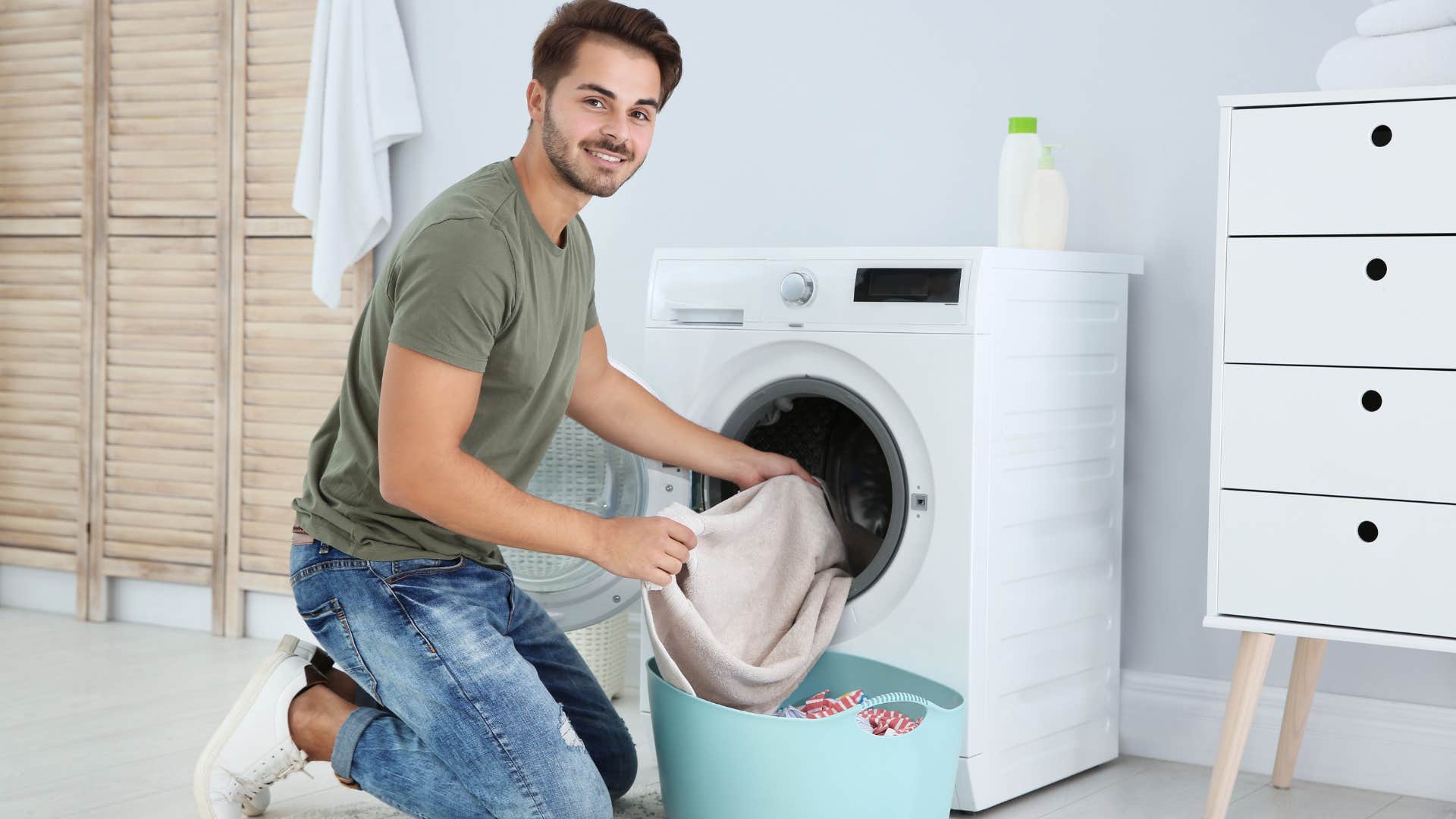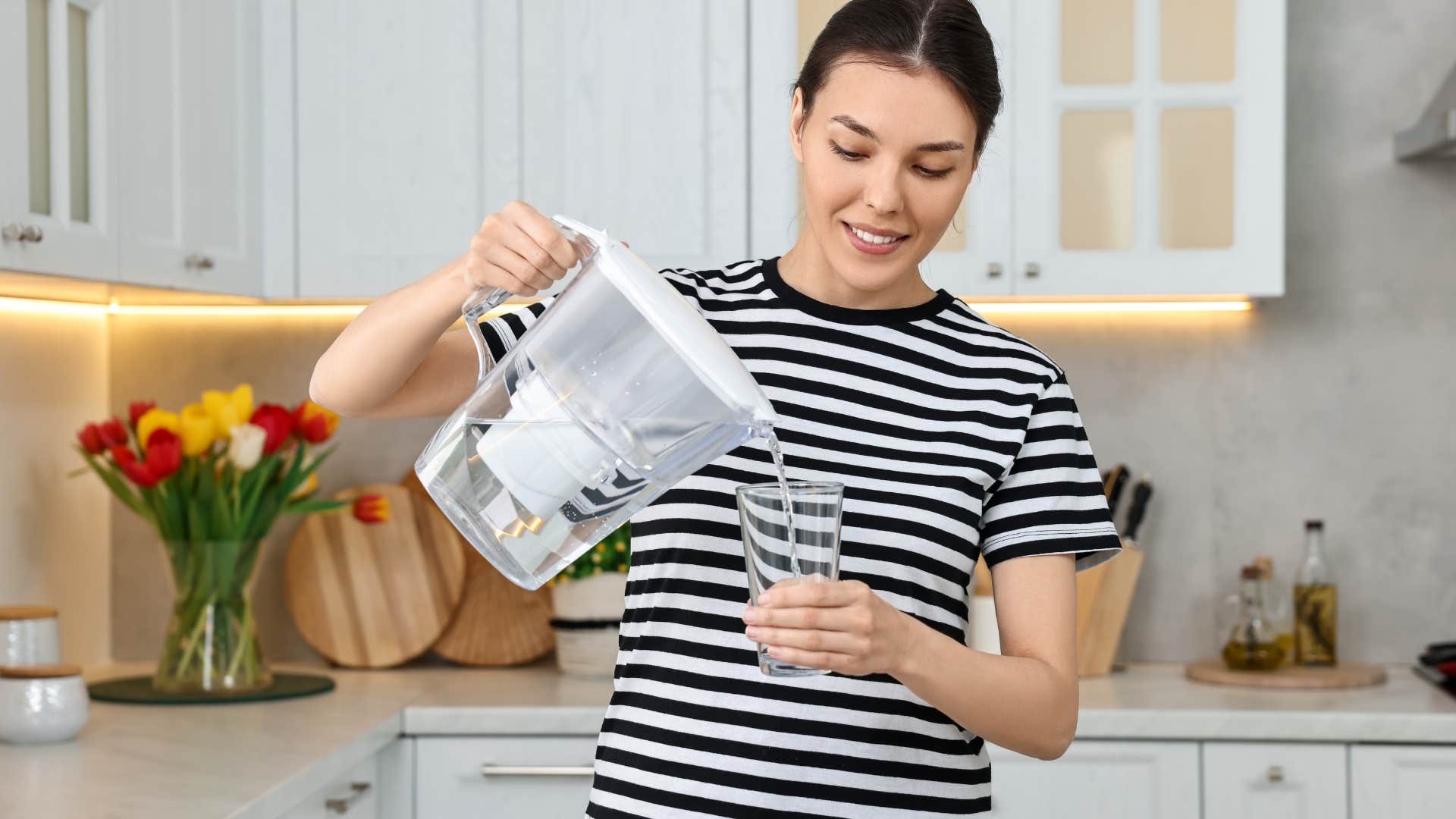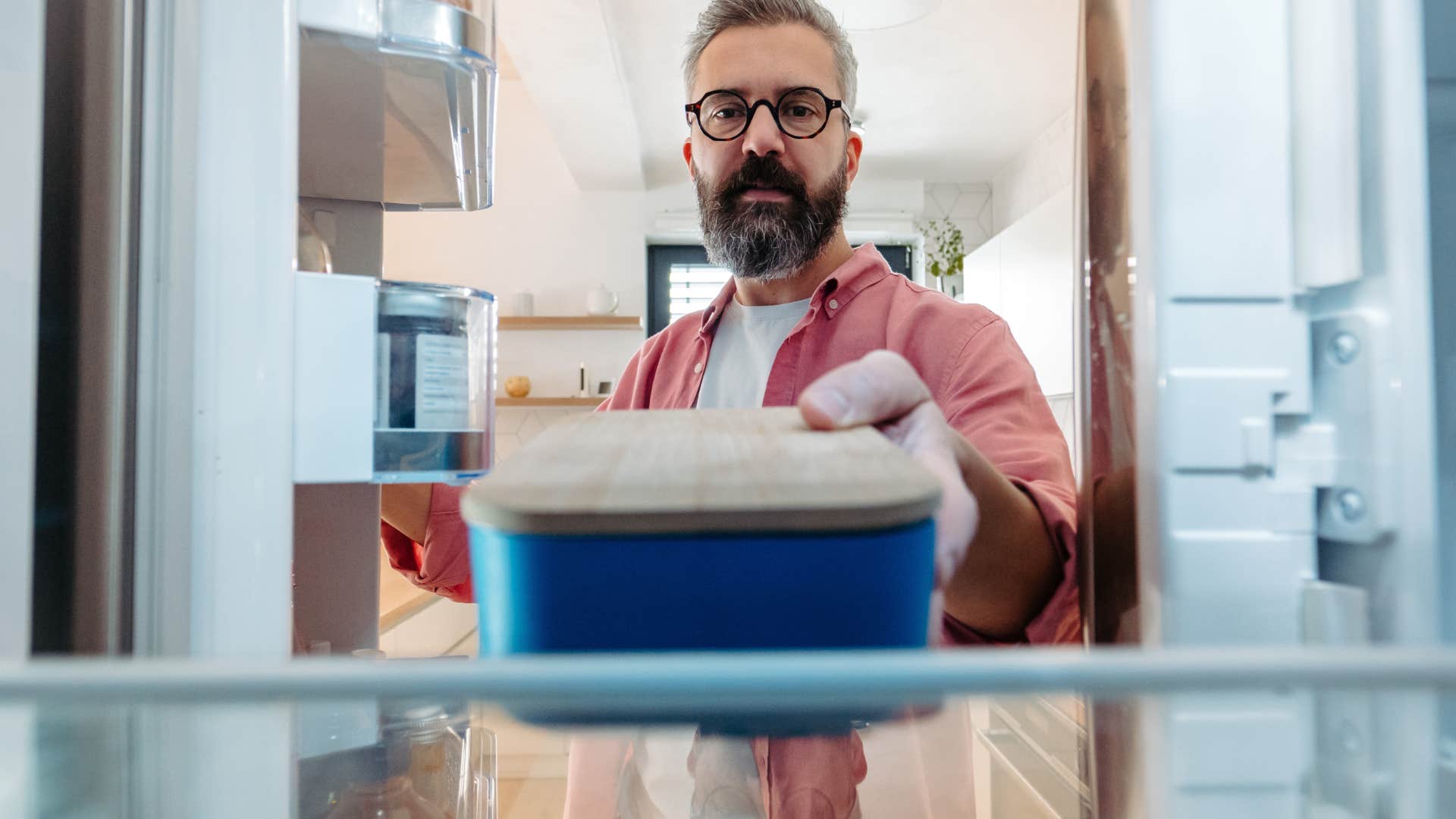Your Parents Raised You Right If You Use These 11 Things In Your Home To Save Money
Good parents don't just care about their kids when they are young. They teach them how to save money in order to ensure their futures.
 voronaman / Shutterrstock
voronaman / Shutterrstock Parents who care about their children consider not only how they’re doing in the present moment, but they also keep their future in mind. Preparing kids to be responsible adults is one of a parent's primary responsibilities. While there are many ways to do this, a significant one is teaching them how to manage and save money effectively.
As the FDIC explained, “Parents are the primary influence on a child’s future financial well-being because they have many occasions to communicate information, set powerful examples, and involve their children in activities that teach them financial skills. Parental involvement in their children’s financial education had long-lasting effects.” One of the best ways parents can do this is to teach their children ways they can save money in their homes.
Your parents raised you right if you use these 11 things in your home to save money
1. Energy efficient appliances
 New Africa | Shutterstock
New Africa | Shutterstock
One of the easiest ways to save money in your home is to use energy-efficient appliances. These appliances use less energy than average, meaning they incur a lower cost on your utility bills. By encouraging their children to use energy-efficient appliances, parents can not only help them save money but also show them a way to lessen their environmental footprint. Some of these appliances can be identified by their Energy Star designation from the U.S. government.
On the government’s Energy Star website, they stated, “Many products, homes, and buildings use more energy than they actually need, through inefficiencies and energy waste. Energy efficiency is one of the easiest ways to eliminate energy waste and lower energy costs. It is also one of the most cost-effective ways to reduce air pollution, help families meet their budgets and help businesses improve their bottom lines.”
One study published in Energy Policy found that Energy Star refrigerators are particularly effective at reducing electricity usage, and, by extension, costs. This is proof that energy-efficient appliances really can get the job done while using less energy and saving you money. Parents who care about their kids’ finances will be sure to encourage them to use energy-efficient appliances for the numerous benefits.
2. A water filter
 New Africa | Shutterstock
New Africa | Shutterstock
Tap water certainly leaves something to be desired and is even considered unsafe to drink in some areas. The solution, for years, has been to buy water bottles or jugs instead. But these prices can add up, especially when you’re purchasing enough to stay properly hydrated. That’s where a water filter can come in handy. Whether you have the kind that attaches directly to your faucet or a pitcher with a filter, you can utilize less expensive tap water and avoid buying all those plastic bottles and jugs, which will also be better for the environment.
An article in the American Journal of Public Health reviewed a study that found older adults were 12% less likely to contract a gastrointestinal illness when drinking water from a filter than when drinking water from a tap. The same study suggested that if one were to stop using a water filter suddenly, their risk of illness could increase by 35% over a six-month period. Clearly, there aren’t just financial benefits to using a water filter, although those are relevant as well. Writing for CNET, Alison DeNisco Rayome found that a Brita filter costs hundreds of dollars less than the top three bottled water brands for a yearly supply.
If parents teach their children the importance of owning a water filter, they’ll be helping them save untold amounts of money annually. It can be hard to choose to get a water filter when they can be an investment, but they are definitely worth it when you consider how much money you can easily spend on bottled water. A water filter is well worth the initial money and effort it takes, considering how much it will save you over time.
3. Reusable bottles and cups
 StratfordProductions | Shutterstock
StratfordProductions | Shutterstock
Similar to a water filter, reusable bottles and cups can save you a significant amount of money. Instead of using plastic bottles for your beverages, or even something like a disposable coffee cup, you can hang on to bottles and cups you can clean and use repeatedly. Using disposable containers for your drinks is quite literally throwing money away. As soon as you’re done with it, it goes straight into the garbage can. Reusable bottles and cups can be used over and over again and just require a simple washing between uses.
According to a study from Boston University, one million water bottles are purchased each minute. That’s a lot of plastic waste, and a whole lot of money spent. They also estimated that using a reusable water bottle can save you $1,350 each year. If you choose to invest in a quality water bottle that costs a bit more, perhaps around $50, you would be paying that cost one time compared to approximately $16,200 over the roughly 12 years that a reusable water bottle lasts.
Hydration is important, and for many people, coffee is a daily staple. By encouraging their children to use reusable bottles and cups, parents can help them save thousands of dollars. There are surely better uses for that money than a bunch of plastic bottles or Styrofoam cups that you’re just going to throw out.
4. Proper insulation
 santypan | Shutterstock
santypan | Shutterstock
Insulation is part of what protects your home from the elements. People aiming to save money know that strong insulation can make a big difference. It will help regulate the temperature of your house, keeping it warm during colder months and cool during warmer ones. This means you’ll spend less time moving your thermostat’s temperature up and down. And, of course, the less you have to change the temperature on your thermostat, the more money you’ll save.
Interestingly, the Environmental Protection Agency found that good insulation could save a homeowner approximately 15% on their heating and cooling costs, or 11% total on their energy bill. Depending on how much your energy bill typically costs, this could be a pretty good chunk of money. By keeping the thermostat fairly stationary and regulating the temperature in your home, you’ll cut costs on your utility bills, which will be a welcome sight when it comes time to pay them each month.
Parents who raise their children right teach them the importance of sound insulation. It’s easy to think that insulation is quite literally out of sight, out of mind (the material is in your walls, after all), but it’s an important thing to think about when purchasing a home or renovating. The stronger your insulation, the less your energy costs will be. It’s worth making an investment in it to save money over time.
5. DIY cleaning supplies
 Prostock-studio | Shutterstock
Prostock-studio | Shutterstock
Cleaning supplies may not seem all that expensive on the surface, especially if you’re only purchasing one or two items at a time. But those costs add up. When you run out, you have to repurchase, and it always seems like each surface and item in your home needs a different kind of cleaner. This can make a significant dent in your budget. An alternative is to make your own.
According to Good Housekeeping’s Alyssa Gautieri, a simple all-purpose cleaner could combine dish soap with water, and some essential oils if desired. Making your own cleaning supplies is certainly not difficult. It just involves combining some basic products you likely already have around the house. Taking these easy steps will save you money. Writing for Today, Kate Kordesmeier noted that a DIY cleaning product can actually cost less than $1, whereas one purchased from a store can cost anywhere from $5 to $15.
Parents who raise their children right will teach them the importance of making their own cleaning supplies and show them how they can easily do so. This will help them save so much money in the long run. The fact that these homemade products are all-natural is just an added bonus to the benefits of using them.
6. Food storage containers
 Halfpoint | Shutterstock
Halfpoint | Shutterstock
Another simple hack that can save you a significant amount of money is keeping a sufficient number of food storage containers on hand, allowing you to store leftovers in the fridge or freezer. Throwing away leftover food is definitely not the way to go if you want to save money. One meal could easily stretch into several if you’re able to store and save the food safely. This doesn’t mean you need to have cabinets cluttered with Tupperware; just enough to save the amount of food that’s right for you and your family is sufficient.
Writing for CNBC, Kathleen Elkins reported that the average family of four loses up to $1,500 annually on wasted food. Of course, some of this food is wasted in ways other than not saving leftovers. However, simply throwing out food that you don’t eat because you don’t have the necessary storage to save it is certainly one of the easiest ways to waste food and money. Depending on what containers you have, you can even use them to plan ahead and meal prep so that you’re not stuck coming up with meals every day.
This is a habit that really starts in childhood. Kids see their parents saving leftovers, and it signals to their brain that this is a normal, and even good, thing to do. Parents have food storage containers, so kids know it’s something they need to do too when they are living on their own. In this way, parents set their kids up for success and truly raise them right.
7. A garden
 StratfordProductions | Shutterstock
StratfordProductions | Shutterstock
With grocery prices seeming to rise almost by the day, fresh produce definitely isn’t getting any cheaper. One workaround is to grow your own at home with a garden. There’s even an added benefit if you like flowers. Buying a bouquet in the store can get pricey, but growing your own is significantly less expensive. Of course, some people don’t have the yard space to start a large garden, but even growing a few things on a windowsill or balcony is an option.
Of course, starting a garden does require you to spend some money on supplies, but it seems to be worth it. A survey from the National Gardening Association found that if you invest $70 into starting a garden at home, you can get a $600 return on your investment. Additionally, Investopedia writer Linsey Knerl noted, “Longer-term it’s cheaper to grow select fruits and vegetables, as the cost of seeds relative to the output is a better deal than buying already grown produce.”
If your parents raised you with a garden, then having one will be second nature to you and just make sense. This is one way that parents can raise their children right. By getting them started on growing their own produce early, they show them not only the financial value of doing so but also the reward for hard work. If someone has a garden, there’s a good chance they got the idea from savvy parents.
8. Reusable cloths
 Hananeko_Studio | Shutterstock
Hananeko_Studio | Shutterstock
It’s pretty clear that anything reusable is a good deal. Reusable cloths are no exception. Whether they’re for cleaning, drying your hands, or something else, it’s much better to have cloths you can use on hand instead of just paper towels. Paper towels have to be thrown away after use and repurchased constantly, while reusable cloths can just be tossed in the laundry. Whether you go for a nice microfiber or a basic towel, it can be hugely beneficial.
According to Statista, the average household spent $114.41 on paper products like towels, napkins, and toilet paper in 2022. This adds up quite a bit. Writing for Earth911, Gemma Alexander claimed Americans were “addicted” to paper towels, and said the country spends a collective $5.7 billion on paper towels each year, which makes up for almost half of the worldwide total.
The amount of money (and trees) that could be saved by using reusable cloths and towels instead of paper towels is immense. Parents can prepare their kids to do this by using reusable cloths themselves when cleaning and using paper products sparingly. This will set the right example for their children and show them that they should follow in their footsteps when they grow up.
9. A sewing kit
 Natee Meepian | Shutterstock
Natee Meepian | Shutterstock
To many, a sewing kit likely sounds like a relic of the past that is most likely to be used by grandmothers. It can be very useful, though. When clothes experience minor wear and tear damage, having a sewing kit on hand to make simple repairs means you don’t have to automatically replace those items. Instead, you can get a little more life out of them. It saves you from having to go out and buy something new every time there’s a minor repair that needs to be made.
The Bureau of Labor Statistics reported that in 2023, consumers spent over $2,000 on clothes. That’s a lot of money. To combat this, people can use sewing kits to mend the clothes they already own, so they don’t have to purchase as many new items. Katrina Rodabaugh, a fiber artist and the author of “Make Thrift Mend,” said, “You can start with really basic tools and basic stitches and make beautiful, durable repairs.” In other words, an excess of artistic talent is not needed.
This is something else that parents can model the example for when it comes to their children. If they are seen using sewing kits to mend clothes and make basic repairs, kids will pick up on it. And, of course, they have to learn how to mend from somewhere. There’s no better place than with their parents. This will help them save money later.
10. Streaming devices
 MAYA LAB | Shutterstock
MAYA LAB | Shutterstock
Using streaming devices as a way to save money may sound counterintuitive because they cost money themselves. For example, if you purchase a smart TV that allows you to watch movies and shows from subscription services, you have to pay for the TV and the subscription. This may actually be a better option in the long run, though. Cable and satellite prices are higher than ever before, and they rarely allow you to watch the things you actually want.
Laura McMullen, a writer for NerdWallet, said, “As of this writing, the monthly base cost for cable (without internet) typically ranges from about $40 to $145 for new customers. The cost depends mainly on the provider and the number of channels. Also, taxes and installation can push up your price.” As for satellite TV, Dish’s lowest cost package, “America’s Top 120,” costs $91.99 a month. On the other hand, a standard plan from Netflix with ads included costs $7.99 per month.
Streaming devices are certainly newer technological innovations, so there’s a chance that some parents may not be as familiar with them. However, by discussing the fact that cable and satellite TV are too expensive, especially for what they offer, and teaching kids the importance of saving money and getting a good deal, parents can plant the seed in their kids’ heads that streaming devices are a good idea because they offer more bang for your buck. This is how parents can raise their kids right.
11. Budgeting tools
 Antonio Guillem | Shutterstock
Antonio Guillem | Shutterstock
Some people may not think of budgeting tools as being things you actually have in the home, but they technically are. Whether you use something digital like a spreadsheet or prefer good old pen and paper, it’s important to keep track of the money you earn, spend, and have leftover to save. A budgeting tool is essential for anyone who wants to save money or just be conscious of their spending habits.
According to Thrivent Financial, there are many benefits to having a budget. Perhaps the most commonly acknowledged one is that it prevents you from spending too much money. Additionally, it helps you keep an eye on your debt and credit, helps you work towards goals, including retirement, and gets you ready for any financial emergencies that may arise.
People who were raised right by their parents will know the value of keeping an active budget. They will have watched their parents do it themselves and recognized how important it was to their finances. They’ll want to replicate this by using their own budgeting tools in an effort to save money. Kids whose parents taught them to budget definitely have an advantage in life.
Mary-Faith Martinez is a writer with a bachelor’s degree in English and Journalism who covers news, psychology, lifestyle, and human interest topics.

